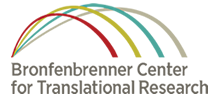 I received a shocking e-mail from my public school superintendent a few weeks ago. A substitute teacher who has worked at my son’s elementary school was arrested for possessing child pornography.
I received a shocking e-mail from my public school superintendent a few weeks ago. A substitute teacher who has worked at my son’s elementary school was arrested for possessing child pornography.
After my initial surprise at the e-mail, I gave some serious thought to how I should broach the issue with my son, or whether to mention anything at all. At seven years old, I’ve never talked to him about the possibility of sexual abuse. I’m pretty sure he doesn’t even know what it is. I wasn’t sure if a conversation would be helpful, or would make him feel anxious or uncomfortable.
While I was mulling it over, I found a systematic review about addressing the issue of sexual abuse among school children. The review, published by the Campbell Collaboration, assess whether school-based programs to educate children about sexual abuse help them develop behaviors and knowledge that will protect them. The review includes 24 separate studies with a total of more than 5,800 participants.
The analysis made some interesting conclusions based on the data available:
- School programs to educate youth about sexual abuse do help them to learn behaviors to help avoid dangerous situations.
- There is evidence that children retain this knowledge over time.
- On the whole, these type of programs do not increase anxiety or fear among children.
- Participating in an education program is likely to increase the odds that children will disclose if they already have suffered sexual abuse.
The authors note that more data is needed to understand the long-term effects of these type of programs. But on the whole, the evidence shows that educating children about sexual abuse yields positive results.
John Eckenrode is a professor of human development at Cornell University, associate director of Cornell’s Bronfenbrenner Center for Translational Research, and director of the National data Archive on Child Abuse and Neglect. He says the good news is that the incidence of child abuse and neglect has dropped by about one-third over the past 15 years.
“We don’t know the precise reasons for this – likely a combination of increased public awareness, better responses by police and the legal system, better treatment programs, and more widespread use of evidence-based prevention programs like those outlined in the Campbell review,” he said. “There is not, however, good data to suggest that universal school-based programs reduce the actual incidence of sexual abuse —most likely due to the fact that most sexual abuse is committed by trusted family members and others well known to the child, not strangers. So while a valuable part of a multi-faceted approach to child sexual abuse prevention, programs such as these are not a replacement for prevention efforts targeting adults caring for young children. “



What is considered child abuse?
Child abuse is typically divided into four separate categories: physical abuse, sexual abuse, emotional abuse, and neglect. While all are different, each one can be extremely damaging to the child’s well-being.
• Physical Abuse: This comprises all actions involving touching a child in a manner with the intent the harm him or her. For example, dealing blows to the child’s head or shaking the child in a violent manner both are forms of physical abuse.
• • Sexual Abuse: These acts contain elements of both physical and emotional abuse. Sexual abuse can either involve contact between the child and another individual, or it may involve forcing the child to watch sexual acts being performed. With physical sexual abuse, the child may be forced to perform sexual acts alone or with another individual (another child, another adult — not necessarily with the abuser him or herself).
• Emotional Abuse: This category encompasses all non-physical acts that have some sort of emotional or psychological impact on the child, such as verbal abuse. Examples of emotional abuse include directing hurtful words at the child or refusing to feed the child when he or she has does something wrong.
• Neglect: This is the most common form of child abuse. It does not necessarily take a conscious effort on behalf of the abuser for him or her to neglect a child. Neglect includes acts such as failure to provide the child with basic necessities for a healthy life: food, water, shelter, bathing, healthcare, or love.
Obviously, child abuse can come in many different forms. Its effects — both physical and emotional — are long-lasting.Recognizing an abused child
Abused children often show different symptoms that indicate abuse. Typically, their behavior changes drastically. They might show signs of antisocial behaviors such as acting out more than usual or becoming extremely quiet and aloof. If a child has been physically abused in some form or fashion, then there are normally physical indicators on his or her body, such as bruises, cuts, or soreness.
to more know just click on this link